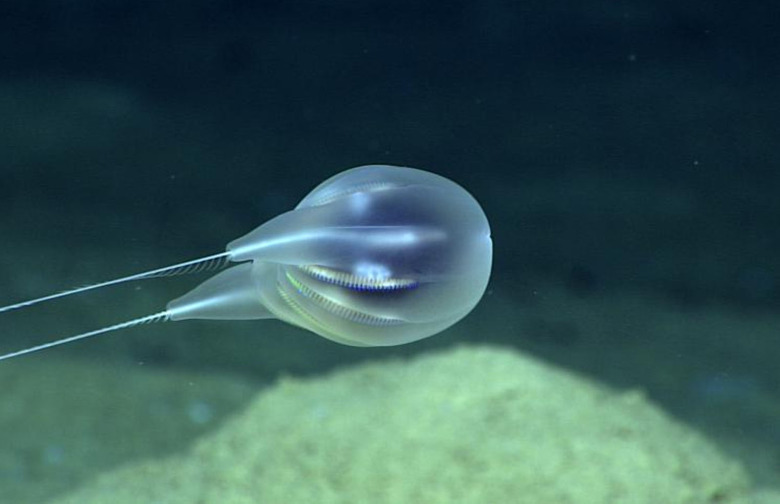This Alien-Looking Creature Is Actually A New Species Of Jelly
- An entirely new species of jelly was discovered using high-definition video during an expedition back in 2015.
- The creature was able to be classified as a new species thanks to the high resolution of the video, which allowed scientists to describe it in great detail.
- There are over 150 species of comb jelly in Earth's oceans.
If the image above looks like some kind of strange alien creature from another world, well, that's because it sort of is. It's from Earth, of course, but as far as science was concerned, this weird little blob didn't even exist until a recent expedition discovered it cruising around at an absolutely crushing depth.
The creature is an entirely new species of comb jelly, which is a relative of the jellyfish we see closer to the surface. The only difference is that this mysterious jelly lives at depths that are absolutely unreachable to a human diver. In 2015, a remote-operated vehicle was exploring the ocean floor at a depth of 4,000 meters when it came across this balloon-like jelly. Now, scientists have confirmed that it is indeed something they had never seen before.
Today's Best Cyber Week Deal
As NOAA explains in a lengthy post about the new jelly, determining that it was an entirely new species was made possible largely due to the high-definition cameras used for the expedition. The Deep Discoverer ROV (remote-operated vehicle) captured the jelly with such detail that the scientists were able to fully grasp its shape and various parts of its body, allowing for a detailed description.
"It's unique because we were able to describe a new species based entirely on high-definition video," Allen Collins, co-author of a research paper describing the discovery, said in a statement. "The cameras on the Deep Discoverer robot are able to get high-resolution images and measure structures less than a millimeter. We don't have the same microscopes as we would in a lab, but the video can give us enough information to understand the morphology in detail, such as the location of their reproductive parts and other aspects."
Believe it or not, identifying a new species via video is still a somewhat controversial thing in scientific circles. Researchers tend to like to have a specimen of any given organism before they feel comfortable declaring that it's new to science. However, this sentiment is gradually changing. In this case, where the jelly was spotted in great detail but no sample was collected, declaring it a new species was easier thanks.
"Naming of organisms is guided by international code, but some changes have allowed descriptions of new species based on video—certainly when species are rare and when collection is impossible," Michael Ford, a of the other authors of the paper, explains. "When we made these observations, we were 4,000 meters down, using a remote vehicle, and we did not have the capabilities to take a sample."
